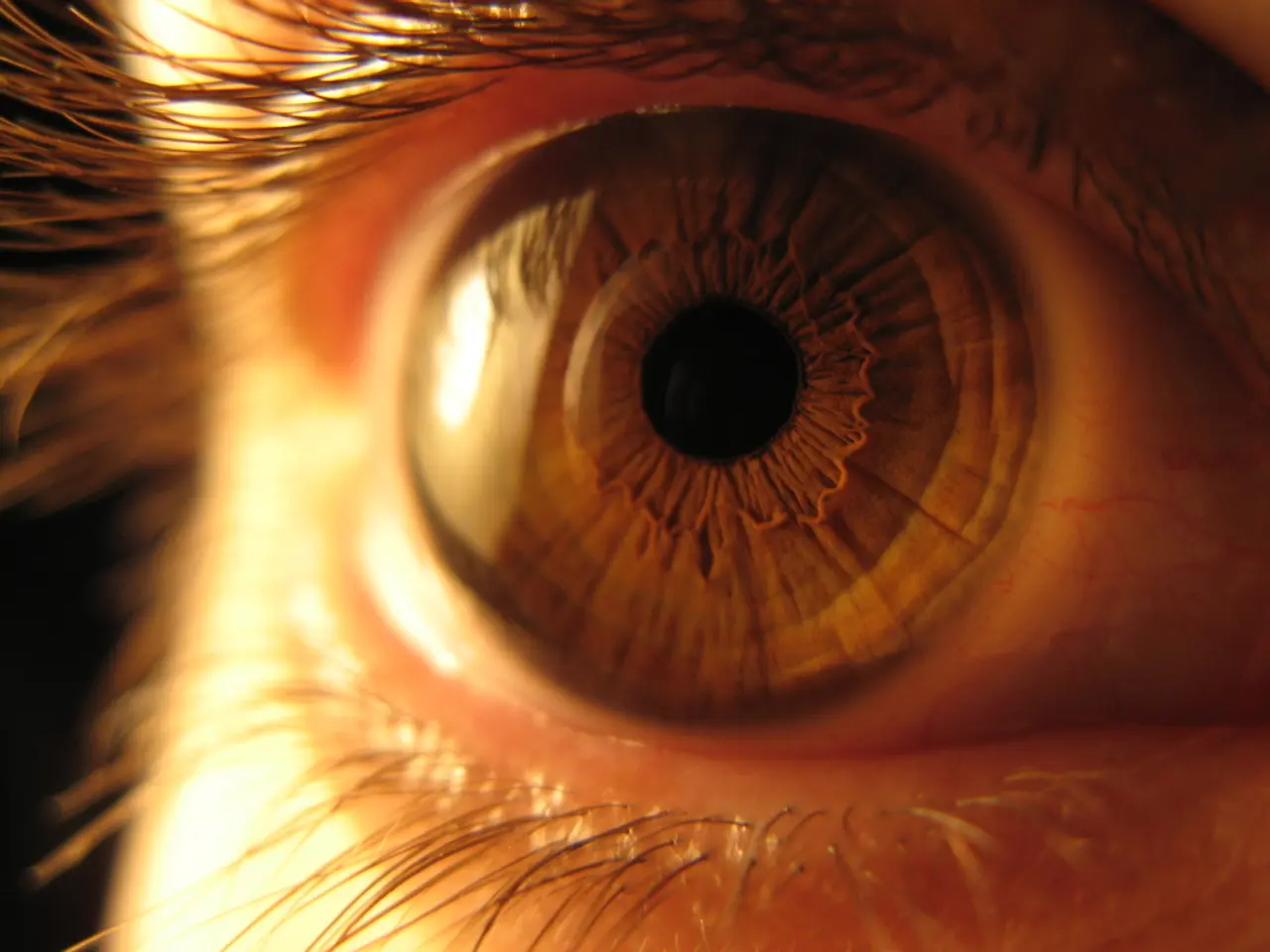Black Earwax: Origins, Signs, and Remedies
Black earwax, while not always a cause for concern, can be a sign of an excessive buildup or other factors. In this article, we'll delve into the common causes of black earwax, safe home remedies for its removal, and when it's time to consult a healthcare professional.
Ear irrigation, a safe and effective method, is often used to remove a buildup of earwax from the ears. However, black earwax can also be the result of trapped dirt or debris, dry or impacted wax, the presence of hair, or certain infections or trauma.
For those seeking home remedies, ear drops such as sodium bicarbonate 5%, diluted hydrogen peroxide, or medical-grade olive or almond oil can help soften the wax. To use, simply lie with the affected ear facing up, place a few drops in the ear canal, and keep the head tilted for several minutes. Repeat twice daily for 3–5 days.
It's crucial to avoid inserting objects like cotton swabs, hairpins, or paperclips into the ear canal, as these can push wax deeper and cause injury. If ear drops do not clear the wax, professional removal methods such as microsuction, ear irrigation, or manual removal by an audiologist or ENT specialist may be necessary.
While black earwax itself is usually not a sign of a serious problem, it's important to monitor for accompanying symptoms such as pain, discharge, or hearing loss. If these symptoms occur, or if home methods are ineffective, it's best to consult a healthcare professional for safe removal and evaluation.
Males and older adults are more likely to experience buildups of earwax, and the insertion of foreign objects like earbuds, earplugs, or hearing aids can lead to earwax buildup and compression. Symptoms like earaches, hearing loss, and dizziness can ensue.
Earwax serves a vital purpose, protecting the ear canal from water, shampoo, conditioner, dirt, viruses, fungi, and bacteria. However, excessive earwax buildup can cause discomfort and potentially more serious issues.
If you're experiencing additional symptoms such as pain, dizziness, a feeling of fullness in the ear, itchiness, a cough, discharge from the ear canal, ringing in the ears, difficulty hearing, or a loss of balance, it's advisable to speak to a doctor.
Before starting any at-home treatment, it's essential to consult a healthcare professional and let them know if the treatment does not work. Ear drops, such as hydrogen peroxide, natural oils, and ear drop solutions, can soften hard and dry earwax, making it easier to clear from the ear canal.
As a person ages, earwax becomes drier and does not clear the ear canal as quickly or easily. Earwax removal drops are available to purchase online, but if at-home treatments are not successful or pain accompanies the black earwax, a person should speak to their doctor about potential treatments.
In most cases, a doctor may use irrigation, suction, or a specialized tool called a curette to remove earwax. If you're experiencing bothersome symptoms alongside black earwax, it's always best to err on the side of caution and seek medical advice.
- Ear irrigation, a safe and effective method, is often used to remove an excessive buildup of earwax.
- Black earwax can be the result of trapped dirt or debris, dry or impacted wax, the presence of hair, or certain infections or trauma.
- For those seeking home remedies, ear drops like sodium bicarbonate 5%, diluted hydrogen peroxide, or medical-grade olive or almond oil can help soften the wax.
- Symptoms like pain, discharge, or hearing loss could indicate potential health issues, and it's important to consult a healthcare professional if these occur.
- Males and older adults are more likely to experience buildups of earwax, and the insertion of foreign objects can lead to earwax buildup and compression.
- Earwax serves a vital purpose in protecting the ear canal, but excessive earwax buildup can cause discomfort and potentially more serious issues like depression, psoriasis, arthritis, or rheumatoid arthritis.
- If at-home treatments are not successful or pain accompanies the black earwax, it's advisable to speak to a doctor about potential treatments.
- Predictive science in health-and-wellness research suggests that addressing black earwax may also help predict the risk of diabetes, HIV, and obesity due to potential infections or complications.




